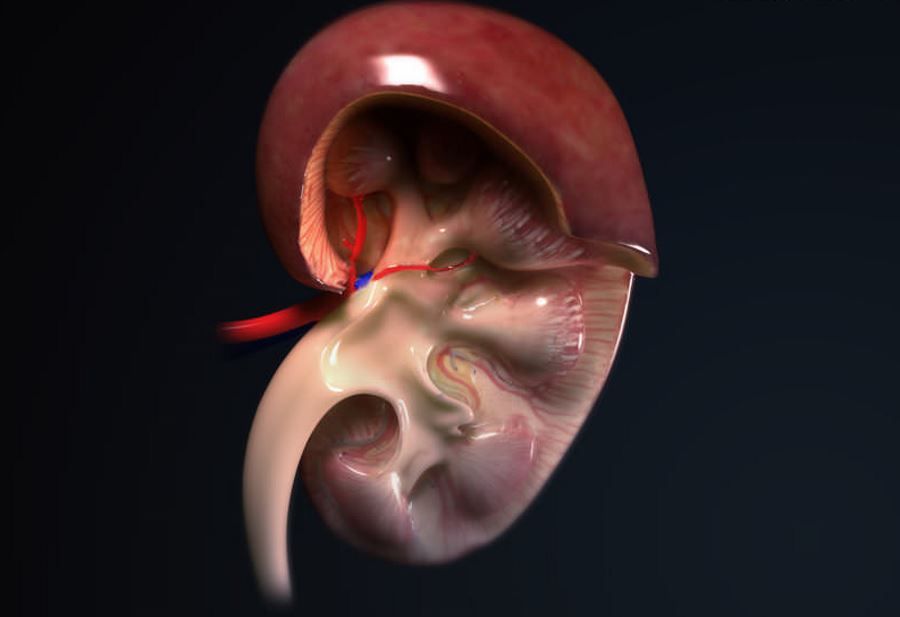Lubushans – a forgotten Slavic tribe
In the historical narrative they occupy a mediocre place, while the latest research shows that the number of known towns and settlements of the Lubuszans – an early Slavic tribe inhabiting the present territory of western Poland – rivaled those in the capital Greater Poland.
Polish historians and archaeologists traditionally recognize that before the establishment of the Piast stateoIn the areas of present-day Poland were settled by rodifferent Slavic tribes. Amongod of the most important are mentioned: Vistulans, Lędzians, Mazovians, Slezanians, Pomeranians, Polans – the latter most likely included the Piasts.
To this day, however, there are disputes about whether all of the above-mentioned tribes actually existed, and what their exact territorial range would be. Determining this is not easy for the archaeologistow, as the objects produced by these communities did not roThey clearly differed from one another. People also lived in similar houses and practiced similar funeral rituals.
With the help of archaeologists come historians. In the case of some of the alleged tribes, we know their names from recordsoin medieval scribesow. This was also the case for the Lubushans. German chronicler and geographer – Adam of Bremen listed them in the book "The history of the bishopoin the Hamburg church" (in the second half of the 11th century), describing them as a "Leubuzzi".
– Recent decades have brought a quantum leap in information on the early Middle Ages of the Lubusz land, notes archaeologist Dr. Jarosław Lewczuk in an interview with PAP. The scientist collected data on excavations carried out at archaeological sites from the timeoin the 7th to 13th centuries. on the territory of the voivodeship. Lubusz.
– In this wayob emerged a rather surprising picture of the area. It turns out that in terms of the number of settlements, the grodoin whether the centeroIn the cult even in the days before the incorporation of the Piast stateoIn the region this too did not rowas different from Wielkopolska – mowi Dr. Lewczuk.
The Lubushans were therefore not at all backward in poroIn relation to their Slavic neighborsofrom across the eastern border. On the contrary, Dr. Lewczuk reminds e.g. The oldest known wooden bridge in Western Slavonia, discovered by an archaeologistoin Lake Niesłysz near Świebodzin. There are many indications that it functioned from the middle of the eighth to the end of the ninth century. In turn, from Lake Długie near Chycina are known relics of a bridge having approx. 100 meterow. This functioned in the 60s and 70s of the 10th century.
According to the researchers, the Lubushan area was in the Piast sphere of influenceow only at the turn of the 10th and 11th centuries. This is evidenced by evidence from these timesoin the traces of fighting in the form of burned remains found on parts of the groddow – m.in. in Grodziszcze near Świebodzin. These are probably testimonies after the war between the Piasts and the Lubushans, whichoa, which the latter lost.
From the calculations of Dr. Lewchuk’s findings suggest that in the period from the 6th/VII to the mid-13th century. There were nearly 30 grods in the Lubuskie regionow, of which 15 already existed in the tribal period, i.e. before the Piast conquestow. Dr. Lewczuk notes that these were considerably smaller than the assumptions of theore were created poLater in the capital cities of Wroclaw or Gniezno. The former consumed 6-8 thousand. m cubic meters of wood (to erect fortifications), and poof up to three times more. The archaeologist believes that in the case of the eleven sposrod grodoIn the tribal period their settlement lasted roAlso in the Piast era. For example, in the case of Grodziszcze, archaeologists managed to establish that the mostoThe later fortress was already built according to the scheme known from the territory of Wielkopolska.
To date, archaeologists have also recorded more than 200 sites from the VI/VII – mid. X w., ktore do not have their own terrain form – so they may be m.in. villages and cemeteries. Most of them have not been excavated, and the age of the relicsow, whichore perhaps hidden beneath the earth’s surface, has been estimated on the basis of ceramic vessels lying on the ground surface. The researcher estimates that before the Piast invasionoThe population of the Lubusz region amounted to approx. 15-20 thousand. osob. In the early state, the population probably increased to 30-35 thousand. inhabitantsow.
– It is difficult to wyro¿nish sharp boundaries of the territory, on whichohe Lubushan people lived, but in my opinion there are strong material grounds for locating them in the area of today’s Lubuska Land, understood as a riverine nexus of the Oder, Warta, Noteć and Obra rivers, the archaeologist believes. He stipulates that, admittedly, the borders drawn in this way were not impassable barriers, but allowed for the gradual separation of the region as a result of roof internal and external events.
There is no clear answer as to why the Lubushans subordinated themselves to the Piasts, even though technologically they did not differ from them. They also had quite a number of strongholds. – It was hardly a subboj in the type of modern wars – this is not how battles were fought then. It was not a matter of extermination, but of appropriation, in order to take control of resources, Dr. Lewczuk believes.
The first mention of the Lubuszans comes only from the 11th century. may prove, according to the archaeologist, that tribal identity emerged in the area (or perhaps it erupted anew or was noticed by the observantow external?) only after the anarchy in the country, whichoThe population of the Lubusz region was ca. 1.5 thousand peopleola Bretislav in 1038.
– This, quite unexpected inotime for everyone and very dramatic, a confluence of factorsow internal and external mohunger to emphasize its own distinctiveness – recently lost to Piast ruleoin the early 11th century – mowi Dr. Lewczuk.
In his opinion, Lubuskie had been an area for hundreds of years "at the junction of" – A kind of melting pot, as can be seen from the poThe subsequent fate of the Lubuska Land, treated as a "bone of contention" and a bargaining chip in disputes between Poland and Germany. RoAlso in internal politics in the era of Poland’s partition, the land was treated quite specificallyolnie and belonged once to Silesia and once to Greater Poland.
The importance of the Lubuska Land was finally marginalized only as a result of the treaty between Boleslaw Rogatka and Archbishop Wilbrand in 1249. and entering into fief dependence on margravesoin Brandenburg. The region became part of Poland only in 1945.
Sourceodło: PAP – Science in Poland, fot. CC-BY-3.0/JulienChatelain/Wikimedia Commons


